
James Harrison Wilson was an American military officer, topographic engineer and a Major General in the Union Army during the American Civil War. He initially served as an aide to Major General George B. McClellan during the Maryland Campaign before joining Major General Ulysses S. Grant's army in the Western Theater, where he was promoted to brigadier general. In 1864, he transferred from engineering to the cavalry, where he displayed notable leadership in many engagements of the Overland Campaign. However, his attempt to destroy Lee’s supply lines failed when he was routed by a much smaller force of Confederate irregulars.
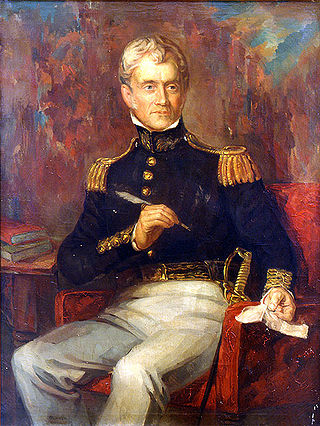
Colonel and Brevet Brigadier General Sylvanus Thayer also known as the "Father of the Military Academy", was an early superintendent of the United States Military Academy at West Point and an early advocate of engineering education in the United States.

William Farrar Smith, known as "Baldy" Smith, was a Union general in the American Civil War, notable for attracting the extremes of glory and blame. He was praised for his gallantry in the Seven Days Battles and the Battle of Antietam, but was demoted for professional and political reasons after the disastrous defeat at the Battle of Fredericksburg. As chief engineer of the Army of the Cumberland, he achieved recognition by restoring a supply line that saved that army from starvation and surrender, known as the "Cracker Line", that helped Union troops to success in the Chattanooga Campaign in the autumn of 1863. Leading the first operation against Petersburg, Smith's caution, possibly illness-related, may have cost the Union a prime opportunity for a quick end to the war. He was relieved of command shortly thereafter.

Andrew Atkinson Humphreys, was a career United States Army officer, civil engineer, and a Union General in the American Civil War. He served in senior positions in the Army of the Potomac, including division command, chief of staff, and corps command, and was Chief Engineer of the U.S. Army.

Fitz John Porter was a career United States Army officer and a Union general during the American Civil War. He is most known for his performance at the Second Battle of Bull Run and his subsequent court martial.
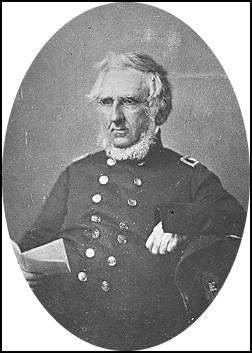
Richard Delafield was a United States Army officer for 52 years. He served as superintendent of the United States Military Academy for a total of 12 years. At the start of the American Civil War, then Colonel Delafield helped equip and send volunteers from New York to the Union Army. He also was in command of defenses around New York Harbor from 1861 to April 1864. On April 22, 1864, he was promoted to brigadier general in the Regular Army of the United States and Chief of Engineers. On March 8, 1866, President Andrew Johnson nominated Delafield for appointment to the grade of brevet major general in the Regular Army, to rank from March 13, 1865, and the United States Senate confirmed the appointment on May 4, 1866, reconfirmed due to a technicality on July 14, 1866. He retired from the US Army on August 8, 1866. He later served on two commissions relating to improvements to Boston Harbor and to lighthouses. He also served as a regent of the Smithsonian Institution.
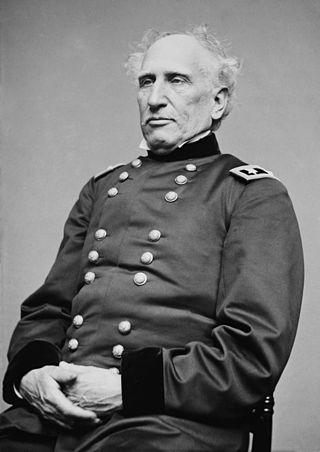
Silas Casey was a career United States Army officer who rose to the rank of major general during the American Civil War.

Samuel Davis Sturgis was a senior officer of the United States Army. A veteran of the Mexican War, Civil War, and Indian Wars, he attained the rank of brevet major general.
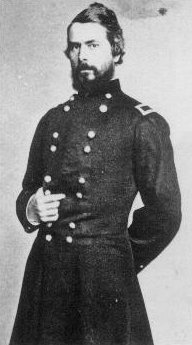
Truman Seymour was a career soldier and an accomplished painter. He served in the Union Army during the American Civil War, rising to the rank of major general. He was present at the Battle of Fort Sumter. He commanded the Union troops at the Battle of Olustee, the only major Civil War battle fought in Florida.

John Gross Barnard was a career engineer officer in the U.S. Army, serving in the Mexican–American War, as the superintendent of the United States Military Academy and as a general in the Union Army during the American Civil War. He served as Chief Engineer of the Army of the Potomac, 1861 to 1862, Chief Engineer of the Department of Washington from 1861 to 1864, and as Chief Engineer of the armies in the field from 1864 to 1865. He also was a distinguished scientist, engineer, mathematician, historian and author.

George Washington Cullum was an American soldier, engineer and writer. He worked as the supervising engineer on the building and repair of many fortifications across the country. Cullum served as a general in the Union Army during the American Civil War, primarily in the Western Theater and served as the 16th Superintendent of the United States Military Academy. Following his retirement from the Army, he became a prominent figure in New York society, serving in many societies, and as vice president of the American Geographical Society. The society named the Cullum Geographical Medal after him.
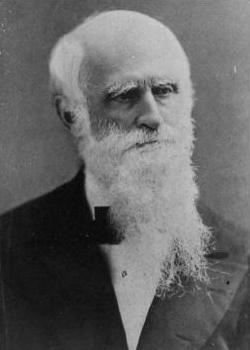
Henry Brewerton was a career engineering officer in the United States Army, serving as the superintendent of the United States Military Academy and then as a colonel in the Union Army during the American Civil War. He was nominated for appointment to the grade of brevet brigadier general in the Regular Army by President Andrew Johnson on December 11, 1866, to rank from March 13, 1865, and the United States Senate confirmed the appointment on February 23, 1867.

John Porter Hatch was a career American soldier who served as general in the Union Army during the American Civil War. He received a Medal of Honor for gallantry in action at the September 1862 Battle of South Mountain during the Maryland Campaign.
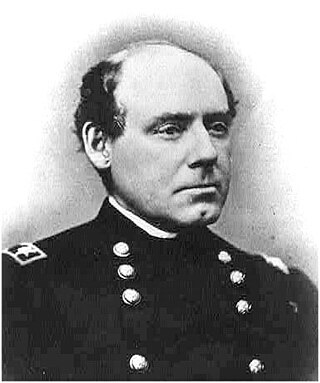
Seth Williams was an American military officer who served as assistant adjutant general of the Union's Army of the Potomac during the American Civil War.

Israel Vogdes was a soldier and military educator from Pennsylvania who served as a general in the Union Army during the American Civil War.
James Totten was a career American soldier who served in the United States Army and retired from active service in 1870 as the Assistant Inspector General. He served as an officer in the Union Army and Missouri militia general during the American Civil War. He may be related to Chief Engineer of the U.S. Army Brigadier General Joseph Totten.

Cyrus Ballou Comstock was a career officer in the Regular Army of the United States. After graduating from the United States Military Academy at West Point in 1855, Comstock served with the Army Corps of Engineers. At the beginning of the American Civil War, he assisted with the fortification of Washington, D.C. In 1862, he was transferred to the field, eventually becoming chief engineer of the Army of the Potomac. In 1863 during the Siege of Vicksburg, he served as the chief engineer of the Army of the Tennessee.

Nelson H. Davis was a general in the United States Army; serving in the Mexican–American War, the American Civil War and in actions against the Apache people in New Mexico.
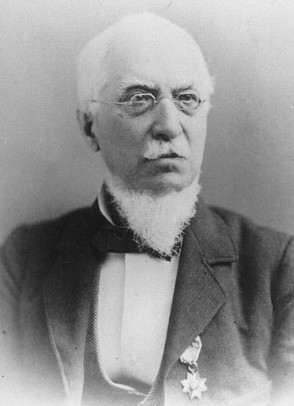
Albemarle Cady was a career United States Army officer who served in the Second Seminole War, Mexican–American War, First Sioux War and the American Civil War. During the Civil War, he was briefly lieutenant colonel of the 7th Infantry Regiment. He then served in administrative positions in the Department of the Pacific, including the District of Oregon. He received brevet appointments for his service in the Mexican–American War and the Civil War. He retired from the Regular Army as a colonel on May 18, 1864. On July 17, 1866, President Andrew Johnson nominated and on July 26, 1866, the United States Senate confirmed the appointment of Cady as a brevet brigadier general in the Regular Army, to rank from March 13, 1865.
Henry L. Scott was a career officer in the United States Army. An 1833 graduate of the United States Military Academy, he was the longtime aide-de-camp to his father-in-law, General Winfield Scott. He served in the Second Seminole War, Mexican–American War, and American Civil War and resigned effective October 31, 1862. After retiring, Scott resided in New York City and authored 1863's Military Dictionary.


















